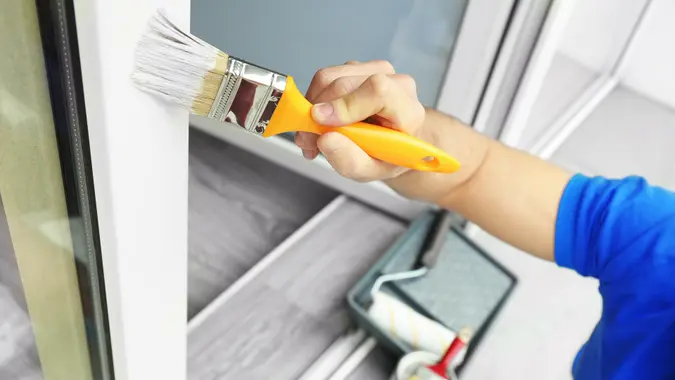I’m a Financial Advisor: This Is the Ideal Budget for a $100,000 Salary

Commitment to Our Readers
GOBankingRates' editorial team is committed to bringing you unbiased reviews and information. We use data-driven methodologies to evaluate financial products and services - our reviews and ratings are not influenced by advertisers. You can read more about our editorial guidelines and our products and services review methodology.

20 Years
Helping You Live Richer

Reviewed
by Experts

Trusted by
Millions of Readers
Earning six figures is the dream. But just because you’re making that much doesn’t mean you’re living large.
Nearly half (48%) of all people earning at least $100,000 a year are living paycheck to paycheck, as per PYMNTS Intelligence data. What this essentially means is that even high earners can still experience financial struggles.
If you don’t want to worry about your finances, you’ll need to set a budget. As to what that budget should entail, here’s what Cynthia Campos Delgado, financial advisor and founder of Campos Wealth Management, had to say.
Also if you are earning a less, here is the ideal budget for a $50,000 salary.
Follow the 70-10-10-10 Budgeting Rule
There are all sorts of budgeting rules out there. But one of the best ones for those living on a $100,000 salary is the 70-10-10-10 rule.
“I am a fan of the 70-10-10-10 guideline,” Delgado said. “Try to live within 70% of your paycheck to cover living expenses. Allocate 10% to savings. The goal is to have emergency or fast cash funds to cover 12 months’ worth of expenses. Then, spend only up to 10% on frivolous spending. Finally, contribute at least 10% to retirement accounts to help fund your future self.”
Breaking this down further, here’s an example of this budgeting rule in action:
- First, 70%: $70,000 should go toward all expenses, like housing payments, utilities, car payments, debts and groceries. Ideally, you’ll also be able to cover taxes, health care and other necessities within this amount.
- Second, 10%: $10,000 should go straight into savings or an emergency fund.
- Third, 10%: $10,000 goes toward things you want rather than need and should be considered guilt-free spending. It’s your choice how to allocate this, but try to split it across things like dining out, gifts and charitable donations. Some of this money can also go towards helping out your loved ones financially.
- Fourth, 10%: The final $10,000 should be invested to help with retirement. If your income increases later or your expenses are low, you can always boost this number to fast-track your retirement savings.
Improving Your Financial Stability on $100,000
It’s all too easy to overspend or end up financially strapped. In some parts of the country, $100,000 isn’t enough to cover all major expenses, especially not if you can only use $70,000 for necessities.
The good news is that there are ways to improve your financial stability even if you’re currently earning $100,000. One of the simplest methods is to change your spending habits.
“Always target improving ways to keep more money in your pocket, identifying where you can reduce the funds that leave you,” Delgado said. “For example, negotiate your cable, internet, subscriptions, memberships, etcetera.”
The most recent available study data from C&R Research found that the average American spends $219 a month on subscription services alone. Many people spend more than they think, largely due to easily forgotten automatically-recurring service charges.
If you know you’ve got subscription services, whether they’re to streaming platforms or Amazon Prime, go through yours and cut out the ones you don’t need. Even saving $50 a month could put another $600 in your pocket.
Another way to stretch your money further is to pay down debt — though this is often more of a long-term solution. This can also help you improve your credit score and make it easier to qualify for lower-interest loans or credit cards should you need them later.
Bonus Tip: Keep an Eye on Your Investments
“You should monitor how investments are performing and tweak where needed,” Delgado added. If you’re expecting higher returns, you might need to reallocate some of your assets. If you’re losing more than you’d like, look for ways to lower the risk factor. When in doubt, consult an investment or other financial professional who has your best interests in mind. They can help you set up your portfolio for the best results.
 Written by
Written by  Edited by
Edited by 

























